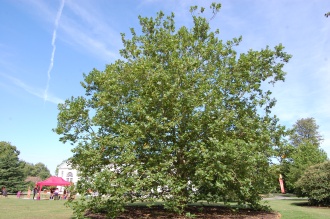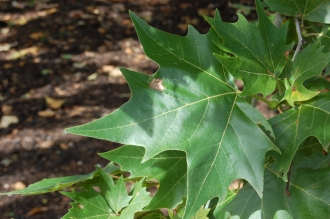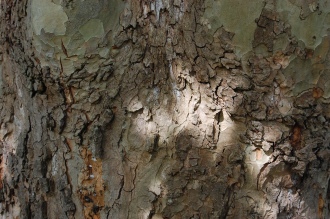Position: Full sun to light shade
Flowering period: Late spring
Soil: Moist, well drained
Eventual Height: 12m
Eventual Spread: 9m
Hardiness: 4a, 4b, 5a, 5b, 6a, 6b, 7a, 7b, 8a, 8b, 9a
Family: Sapindaceae
Acer griseum is a slow growing, small, spreading, deciduous tree. Its dark green leaves are compound with three leaflets, each up to 8cm long and 5cm broad and have blunt teeth on their margins. They are blue/ green on their undersides. Its leaves turn orange and red in autumn before they fall. Its trunk may achieve a diameter of 70cm. Its distinctive orange/ brown bark is smooth and peeling in paper thin layers. Its yellow flowers are small, produced in corymbs. Its green fruit is a samara which is up to 4cm long.
Acer griseum, commonly known as the Paperbark Maple, is native to central China. It was introduced into the UK in 1901 by Ernest Wilson. Acer griseum is synonymous with Acer nikoense var. grideum.
The etymology of the binomial name Acer is derived from the classical Latin name for the Maple. Griseum is from the Latin meaning ‘Grey’.
The landscape architect may find Acer griseum useful as a small tree with attractive peeling bark and autumn leaf colour.
Ecologically, Acer griseum is attractive to pollinating insects.
The Royal Horticultural Society has given Acer griseum their prestigious Award of Garden Merit in 1993.
Acer griseum prefers moist, fertile, well-drained soils. It tolerates most pH of soil.
Acer griseum requires little maintenance. Pruning should be carried out during the dormant months.














